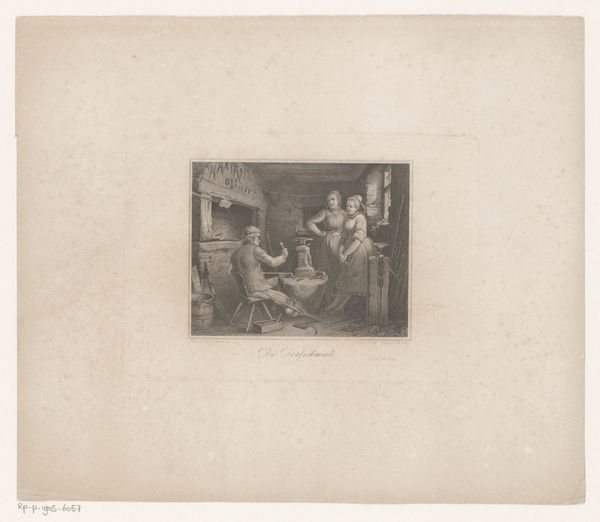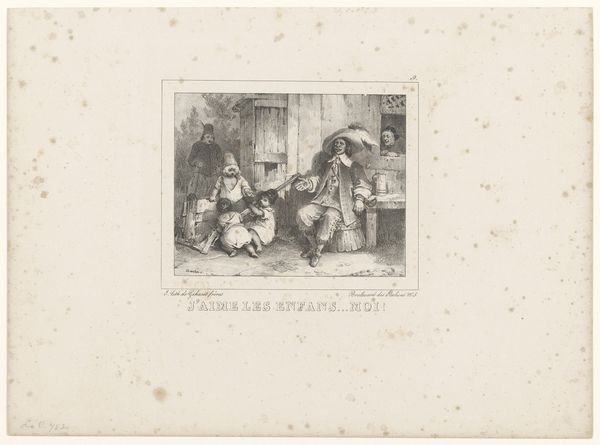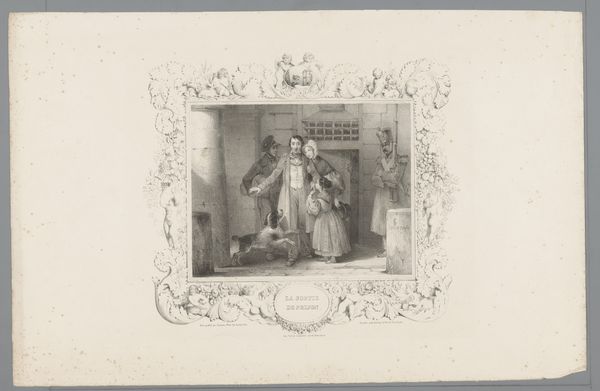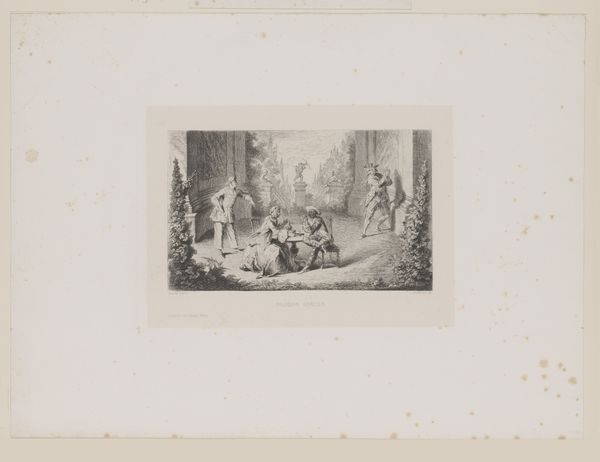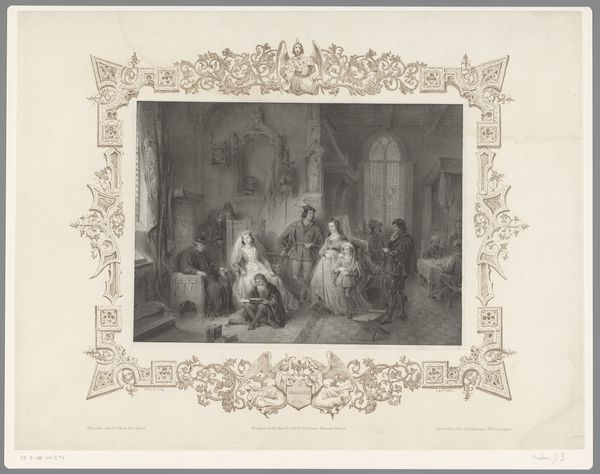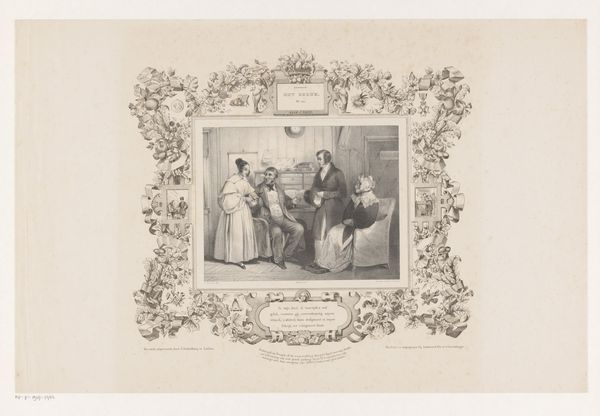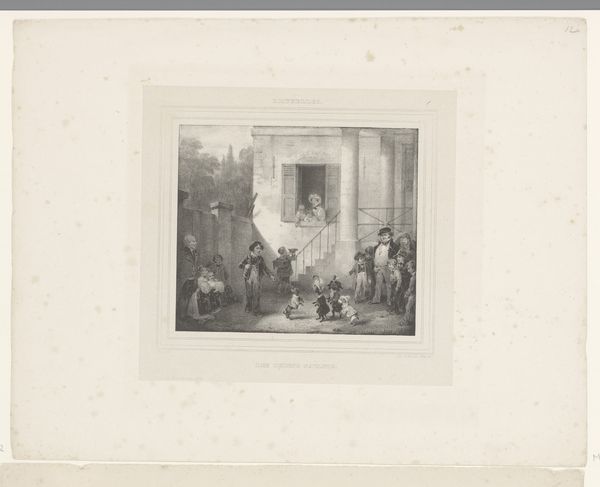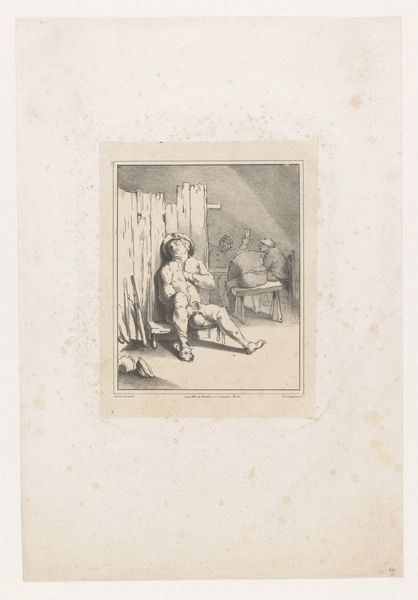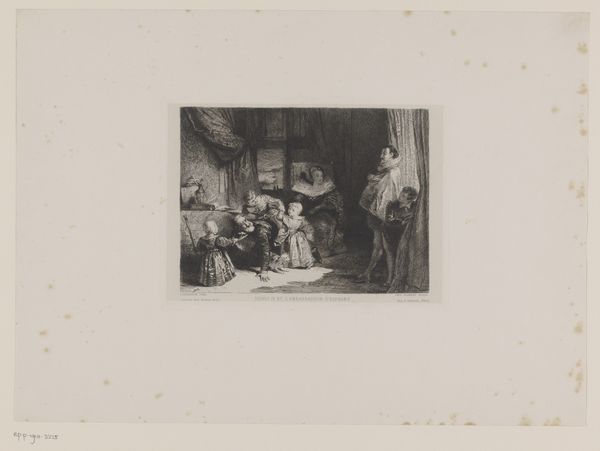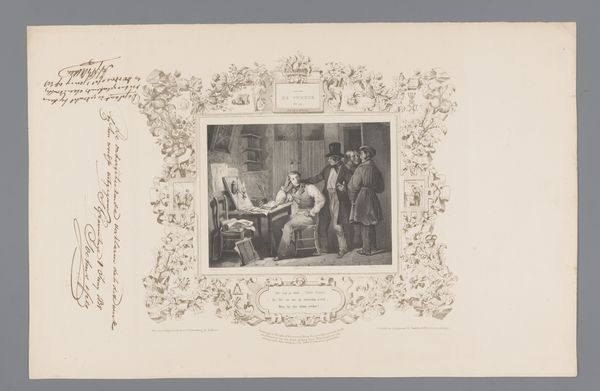
drawing, paper, pen
#
drawing
#
narrative-art
#
figuration
#
paper
#
romanticism
#
pen
#
genre-painting
#
realism
Dimensions: height 312 mm, width 488 mm
Copyright: Rijks Museum: Open Domain
Curator: Jules David’s 1836 pen and ink drawing on paper, “Beslaglegging op spullen van een arm gezin,” or “Seizure of goods from a poor family,” depicts a scene of… well, it's all in the title. Editor: Gosh, it's pretty bleak. You feel the cold of that bare room and the crushing weight of the law bearing down on them. Look at the kids clinging to their mother, even the dog seems mournful. Curator: It's a clear social commentary, isn't it? The detailed rendering really puts the focus on the material conditions of poverty. See how the officer’s formal dress contrasts with the ragged clothing of the family. The objects themselves—the mattress, the simple tools—become evidence of a struggle for survival. Editor: The objects tell the story, absolutely! It reminds me a bit of a stage set. But instead of drama, it's raw, sad life laid bare, captured with such simple, delicate lines. The pen work, that meticulous detail… it almost feels like an act of witness. A poignant observation of a cruel event, transformed through the act of its production. Curator: Absolutely. The drawing emphasizes the system that creates such disparities. This links it, historically, to the rise of industrial capitalism and its impacts on the working class. We see those concerns manifest frequently in Romanticism and early Realism. What's absent is what I find compelling, actually: there's no outright judgement or easy emotional plea, but an observation that triggers consideration from a viewer. Editor: I think you’re spot on. There’s almost an awkward stillness about the scene, everyone caught in this horrible in-between moment. You’re not asked to take a side so much as witness. And even after all this time, you feel something real seeing it. Curator: Indeed. Examining artwork such as this drawing forces us to consider the role of systems and the act of material extraction from the poor by economic and state actors, not just the sentimental elements, in evaluating an artwork from that time. Editor: Looking closely has changed the way I see it – it's like peeling back the layers of paper to find a heart beating faintly underneath. A dark one, sure, but one filled with humanity nonetheless.
Comments
No comments
Be the first to comment and join the conversation on the ultimate creative platform.


